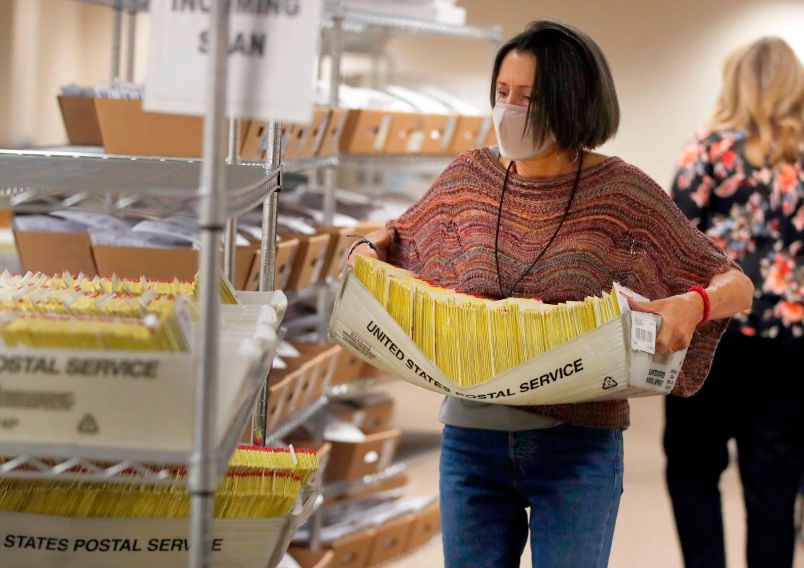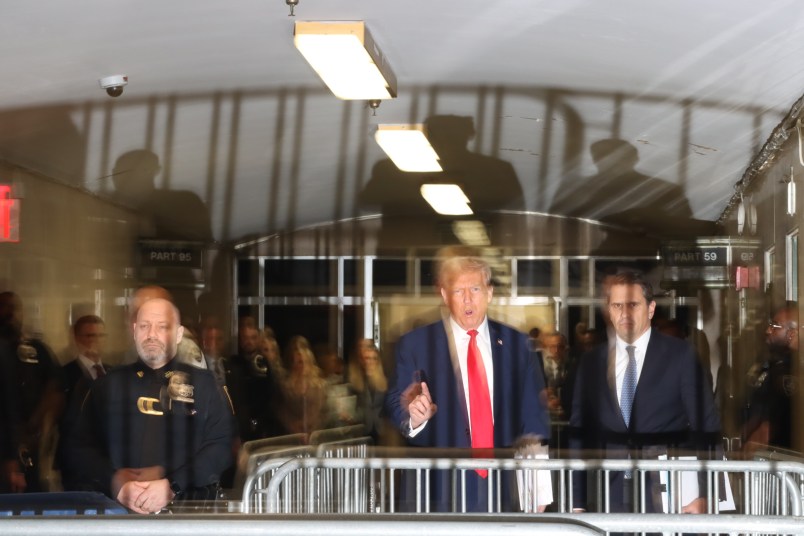A federal judge on Friday ordered the U.S. Postal Service to follow its own purported plan to get ballots delivered to election officials in time.
In a lengthy written order, U.S. District Judge Judge Emmet Sullivan laid out a series of instructions for the Postal Service aimed at areas of the country where completed ballots were taking too long to reach elections offices.
In those areas, he said, USPS “shall implement the ‘Delivery’ measures outlined in USPS’s ‘Extraordinary Measures Memorandum’” unless those measures themselves risked slowing the mail any more. That USPS memo lays out steps to speed up the transfer of ballots from collection boxes and local offices to election officials before Election Day deadlines.
It was just the latest example of Sullivan putting his foot down: On Wednesday, in yet another lawsuit against USPS, he ordered the Postal Service to make clear to employees that they should ignore since-blocked policies from Postmaster General Louis DeJoy that slowed mail delivery, such as eliminating late and extra trips.
Friday’s order specified nearly two dozen USPS districts — one third of those in the USPS network — that fell below the 90% on-time processing target for completed ballots in on at least days days from Oct. 26-28. They included crucial areas of swing states in the presidential contest, such as Atlanta, Greater Michigan and Central Pennsylvania.
Sullivan also ordered USPS to share data on the “extraordinary measures” it was instituting, as well as daily reports explaining which districts had fallen below the 90% target on the previous two days or below 80% on the previous day — as well as “any corrective measures that are now being implemented.”
But that all covered barely half of Sullivan’s lengthy order: He ordered USPS to make a representative available on Friday to answer questions from the lawsuit’s plaintiffs, a collection of individuals, advocacy groups and the voter turnout-focused group Vote Forward.
He also ordered the USPS to submit daily data on the total number of inbound and outbound ballots, as well as daily excel files showing performance figures8.
On top of all of that, he ordered the Postal Service to provide an “representative with expertise in the data processing scores for Election Mail” to answer his questions — by 5 p.m. on Friday.
Read his order in full below:
MINUTE ORDER. In view of 46 joint proposed order, it is hereby ORDERED that United States Postal Service (USPS) facilities in the following Districts, whose Election Mail processing scores for completed ballots returned by voters (Inbound Ballots) were below 90 percent for at least two days from October 26 to 28, shall implement the “Delivery” measures outlined in USPS’s “Extraordinary Measures Memorandum” dated October 20, 2020 unless the implementation of any of the extraordinary measures, at a district or facility level, would create a significant risk of reducing the timely delivery of Inbound Ballots: Alabama, Alaska, Appalachian, Atlanta, Central Pennsylvania, Colorado/Wyoming, Detroit, Ft. Worth, Greater Indiana, Greater Michigan, Greater S. Carolina, Greensboro, Gulf Atlantic, Kentuckiana, Lakeland, Louisiana, Mid-Carolinas, Mississippi, Northern New England, Oklahoma, Rio Grande, and Triboro. Defendants shall promptly communicate this requirement to the relevant managerial and supervisory personnel within these Districts. It is FURTHER ORDERED that Defendants shall provide Plaintiffs available data from the nationwide survey of “extraordinary measures” being undertaken for Election Mail at USPS facilities, as it becomes available during the day on October 30, 2020. It is FURTHER ORDERED that beginning October 30, 2020 and until further order of the Court, by 3:00 PM each day, Defendants shall file with the Court a document explaining, for each USPS District whose Election Mail processing scores for Inbound Ballots were below 90 percent on each of the previous two days or below 80 percent on the previous day, Defendants’ understanding, based on all reasonably available information, of potential explanations for the current level of service and any corrective measures that are now being implemented. It is FURTHER ORDERED that on October 30, 2020, Defendants shall make a USPS representative with expertise in postal operations available to speak with Plaintiffs and at the Conference before the Court to discuss and answer questions about the Postal Service’s current plans and processes as they relate to the processing of Election Mail. It is FURTHER ORDERED that beginning October 30, 2020, and until further order of the Court, Defendants shall file with the Court data by 10:00 AM each day (except for October 30, 2020, in which case it shall be filed at the earliest reasonably available time and, in any event, no later than 3:00 PM) data on the absolute number of Inbound Ballots and Outbound Ballots captured in the Election Mail processing scores data produced pursuant to this Court’s October 27, 2020 Minute Order. It is FURTHER ORDERED that beginning October 30, 2020, and until further order of the Court, Defendants shall provide to Plaintiffs by 11:00 AM each day native versions of the excel files of service performance data produced pursuant to this Court’s October 27, 2020 Minute Order. It is FURTHER ORDERED that at the conference before the Court at 5:00 PM on October 30, 2020, Defendants shall make a USPS representative with expertise in the data processing scores for Election Mail that USPS is producing, including expertise with respect to the data and issues identified in paragraphs 3 through 5 above, available to answer questions from the parties and the Court about the data. This representative shall also be available to describe and answer questions related to: (a) the methodology used to calculate processing scores for “Inbound Ballots,” “Outbound Ballots,” and “Outbound Non-Ballot Election Mail,” as those terms are used in Defendants’ submission; and (b) a detailed and specific explanation of those reasons, if any, why Defendants contend those processing scores are unreliable. Signed by Judge Emmet G. Sullivan on 10/30/2020. (lcegs3) (Entered: 10/30/2020)










